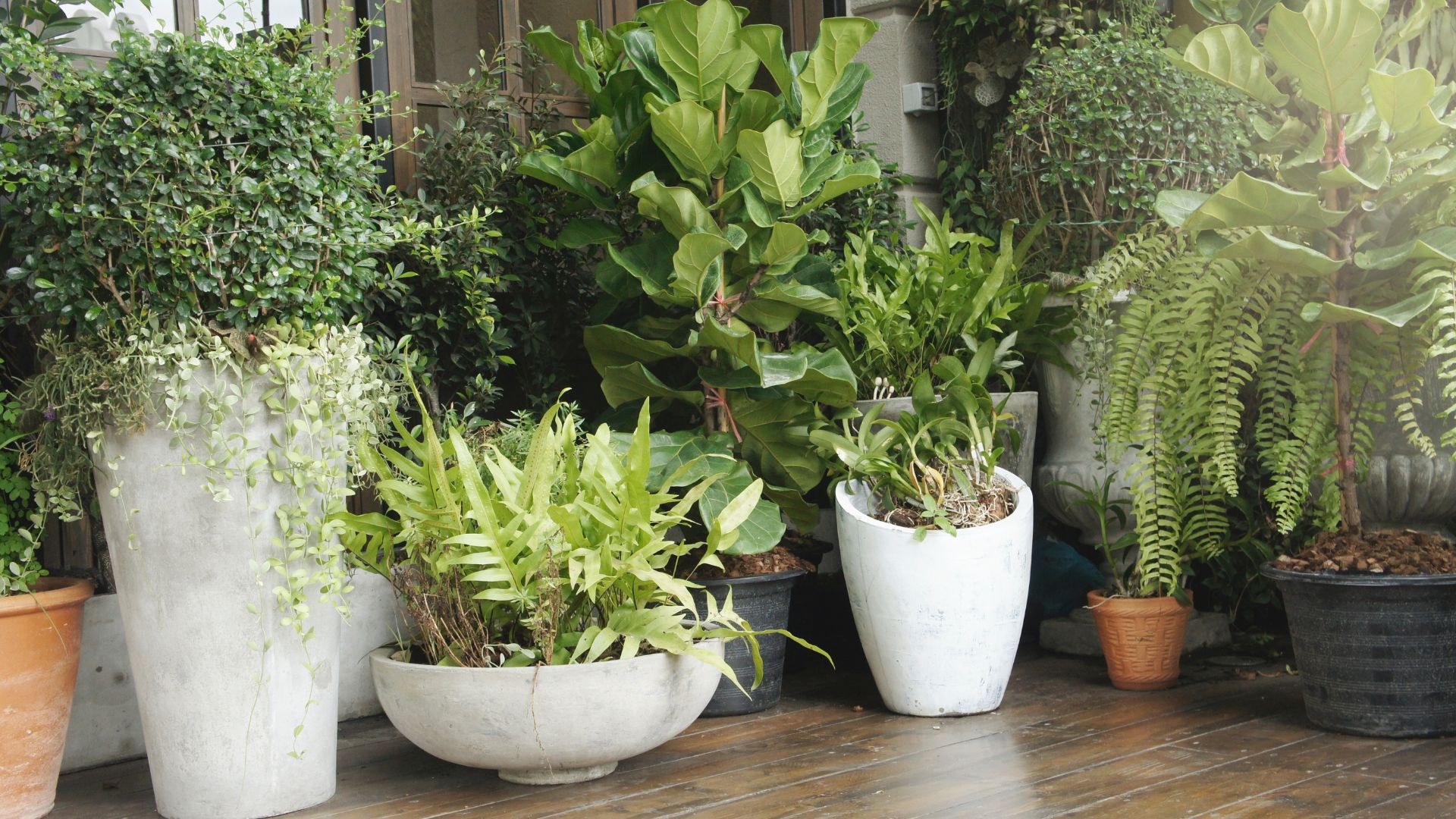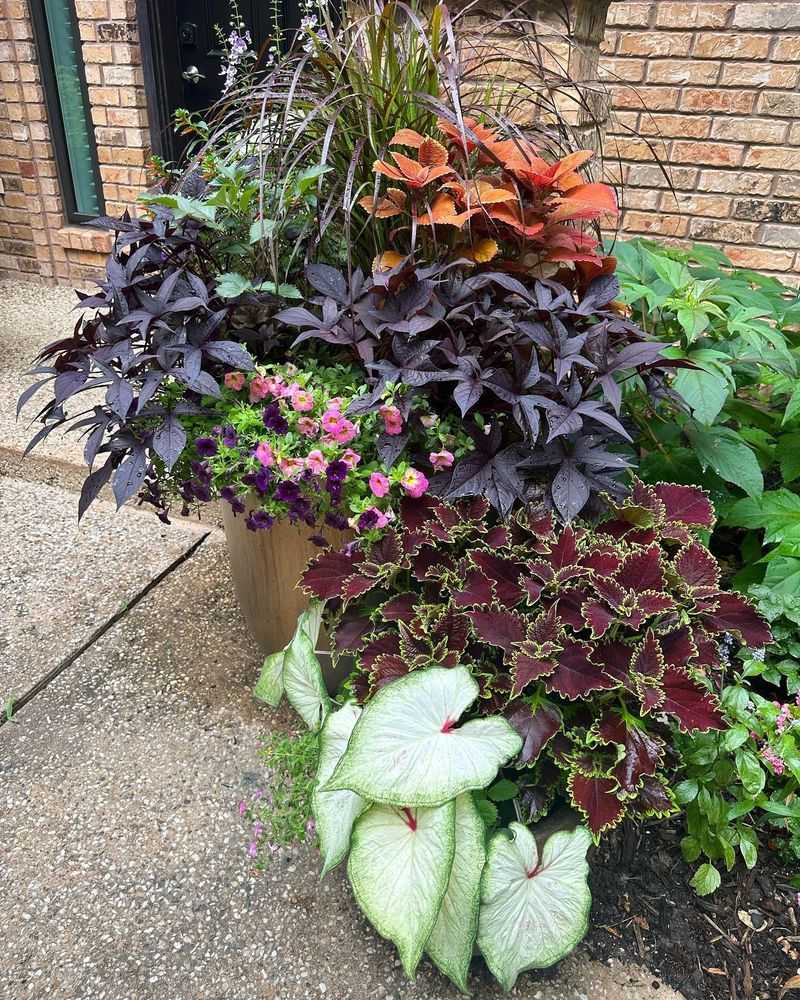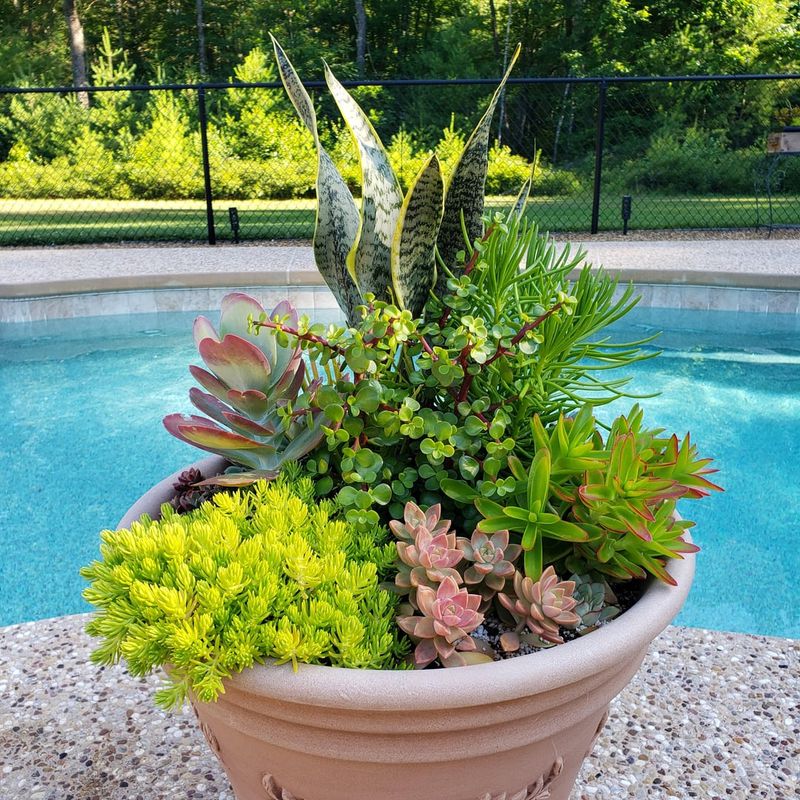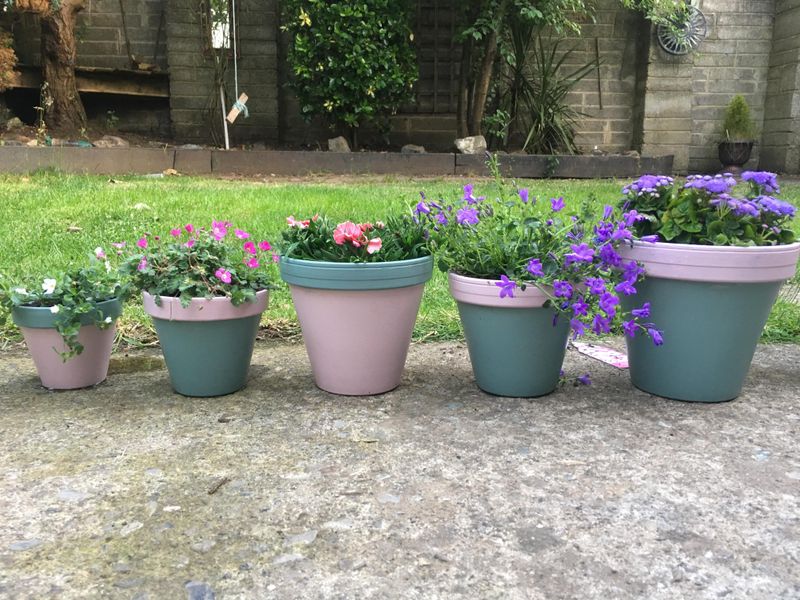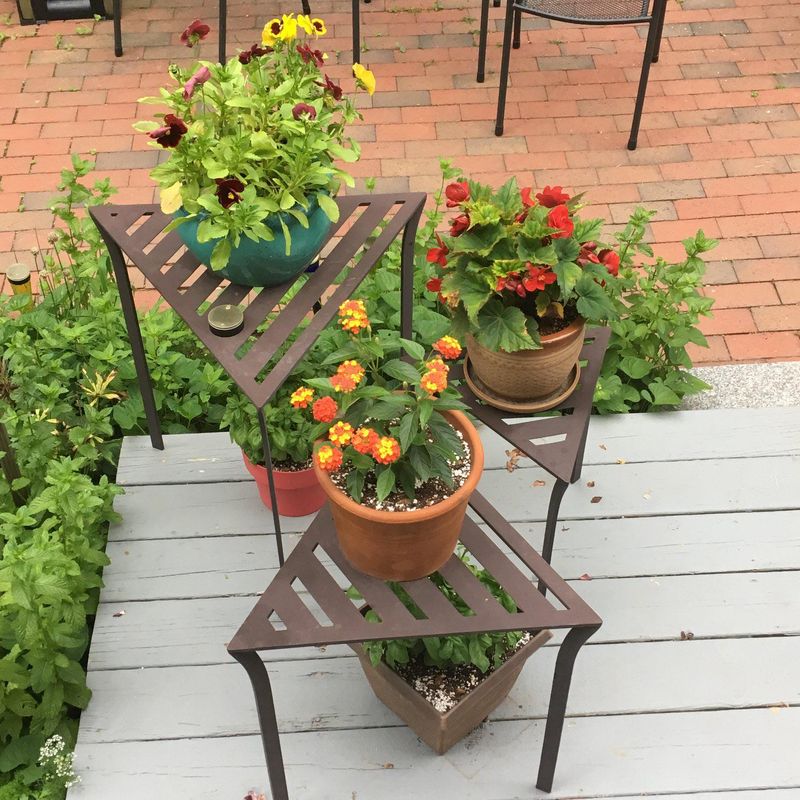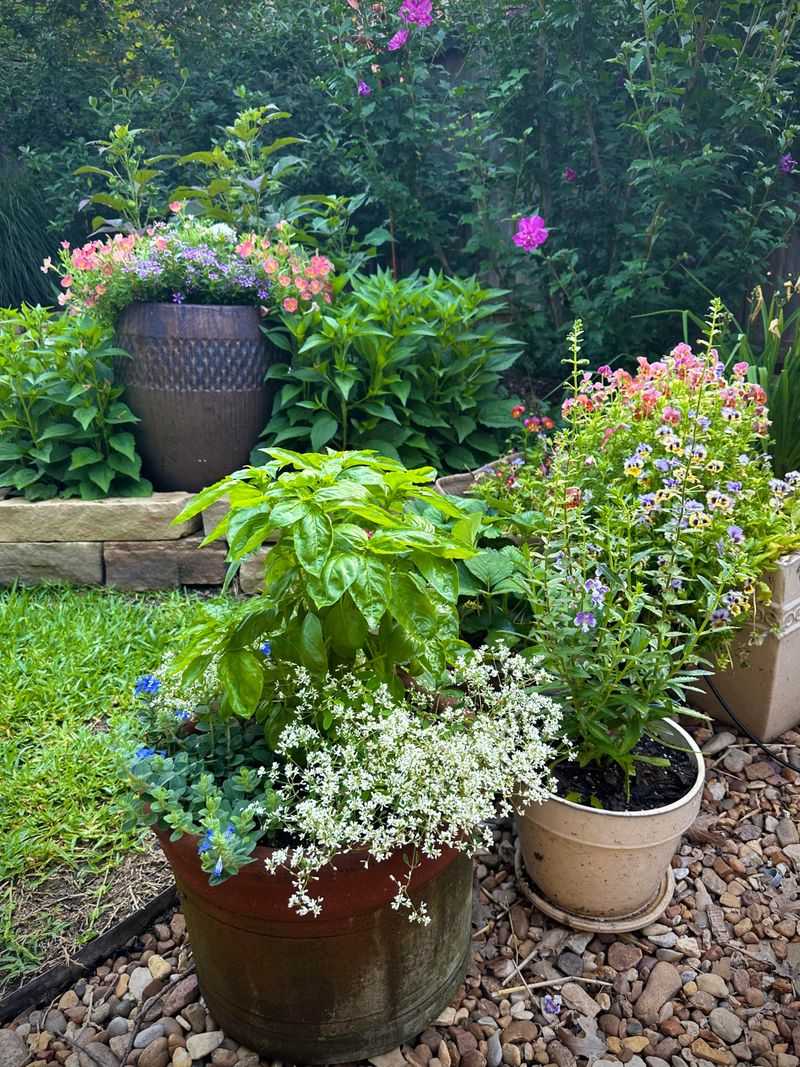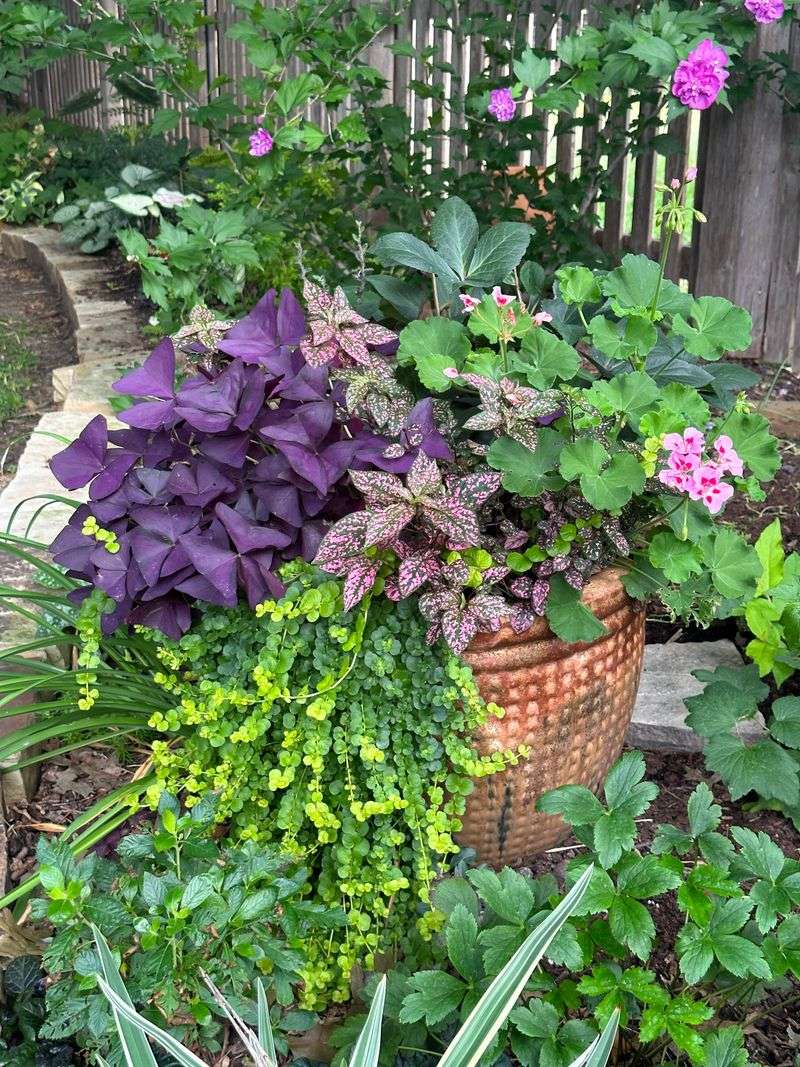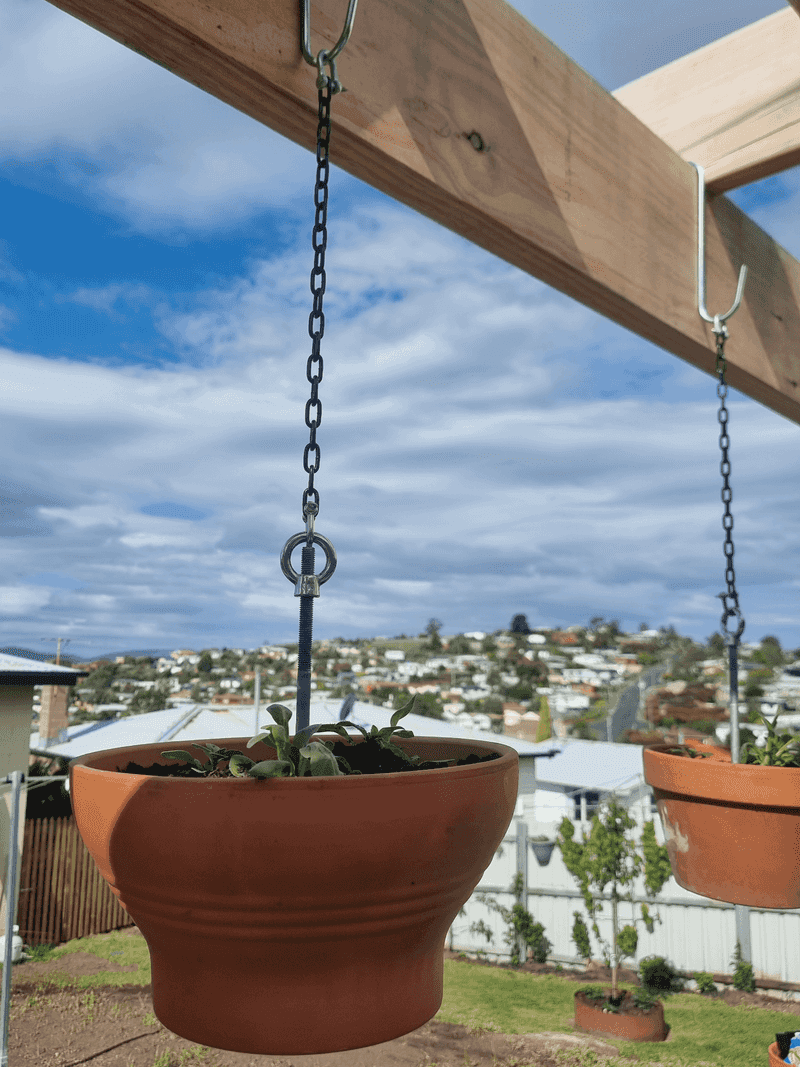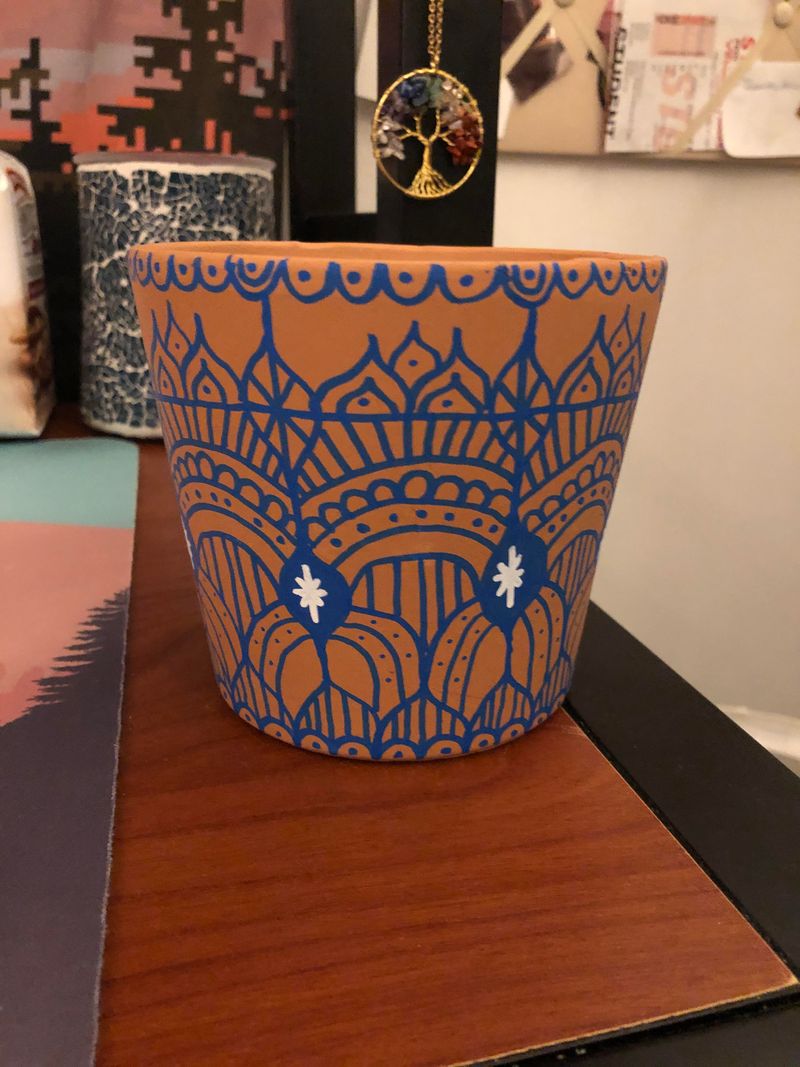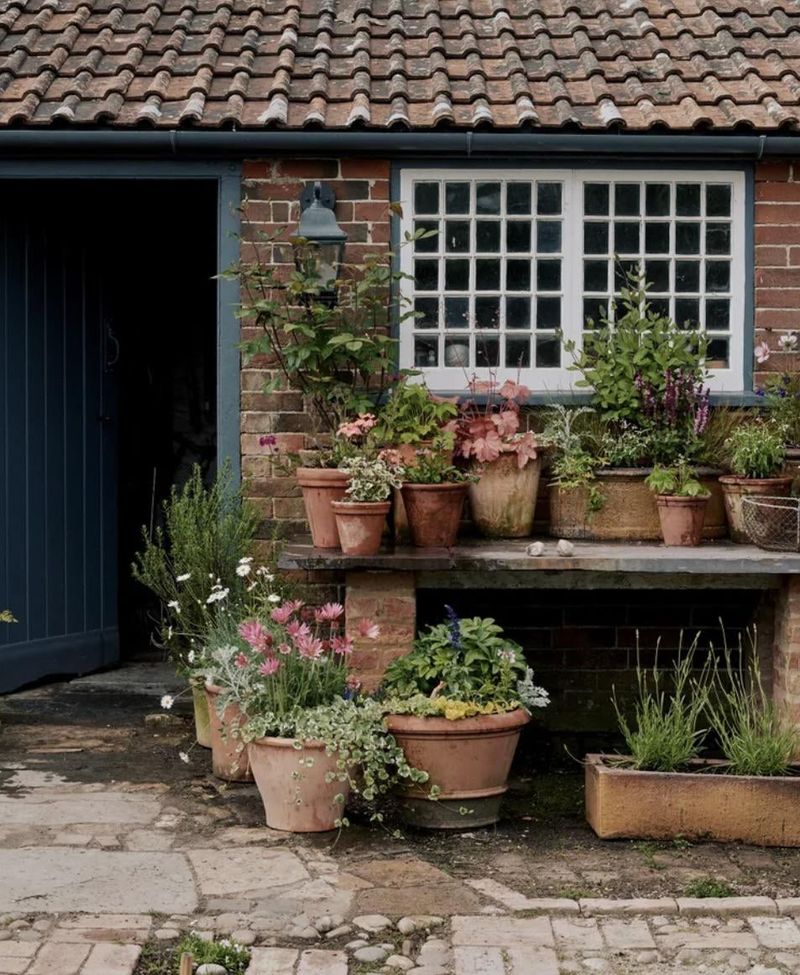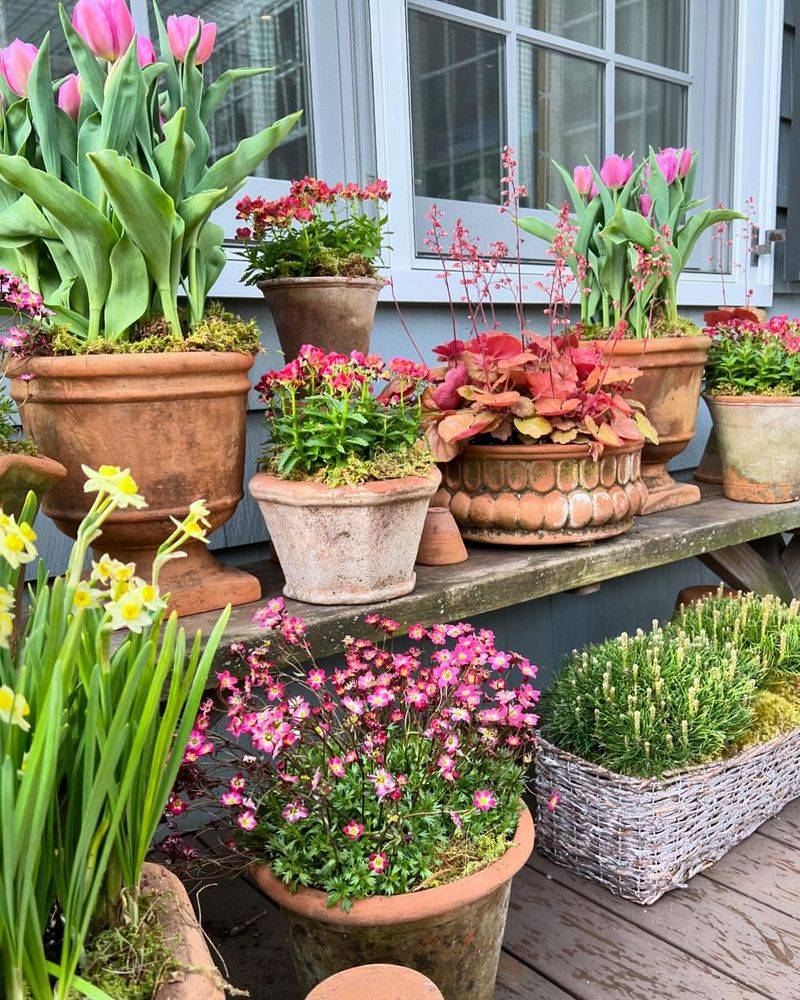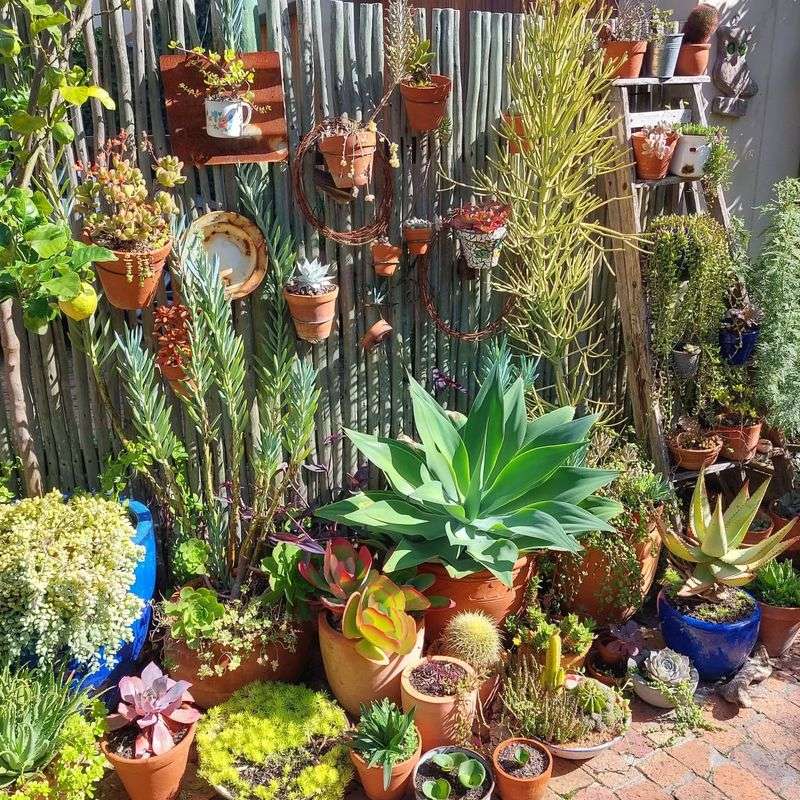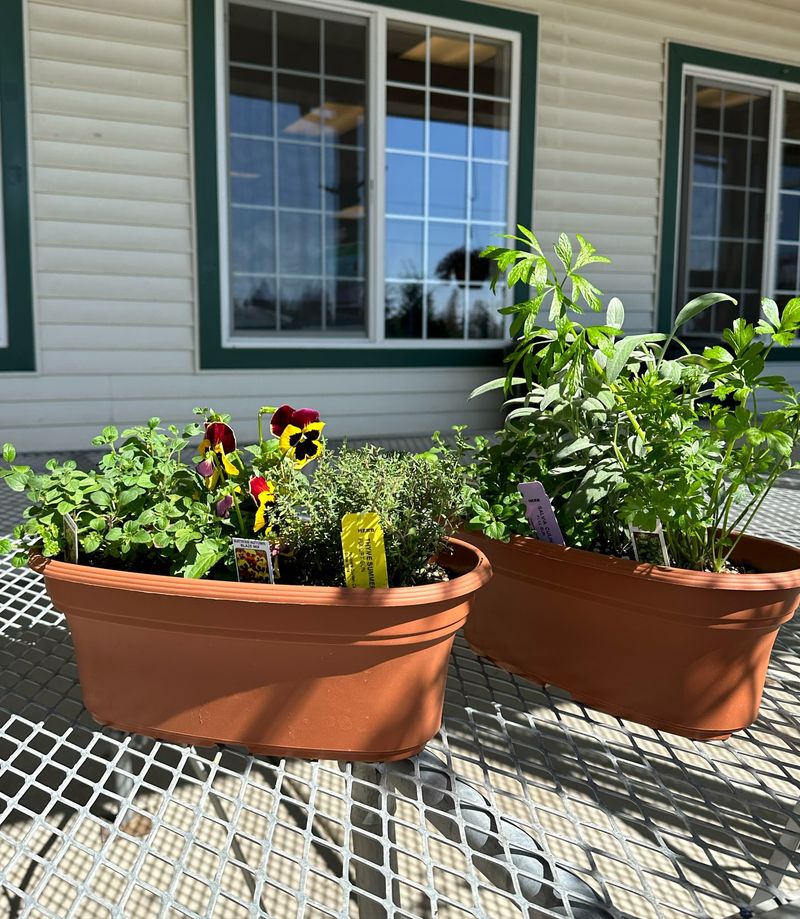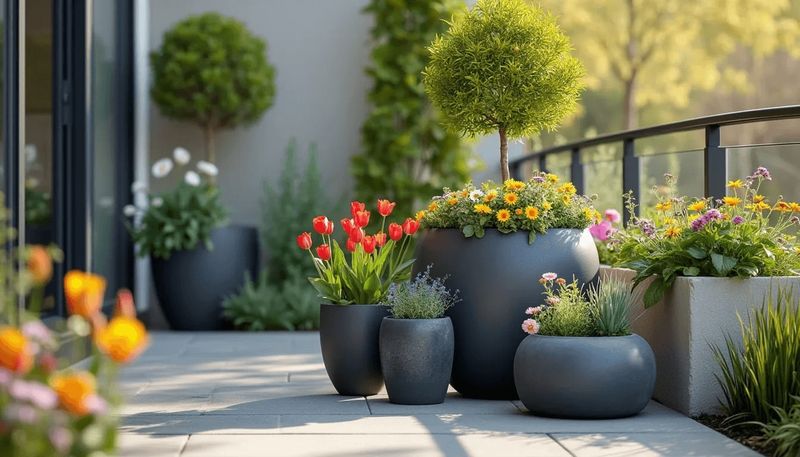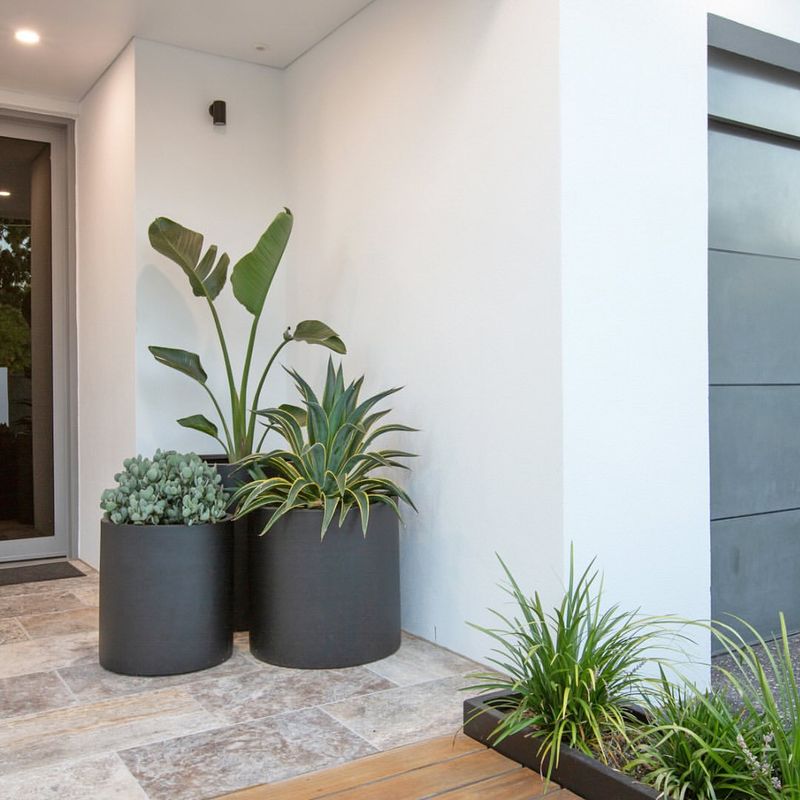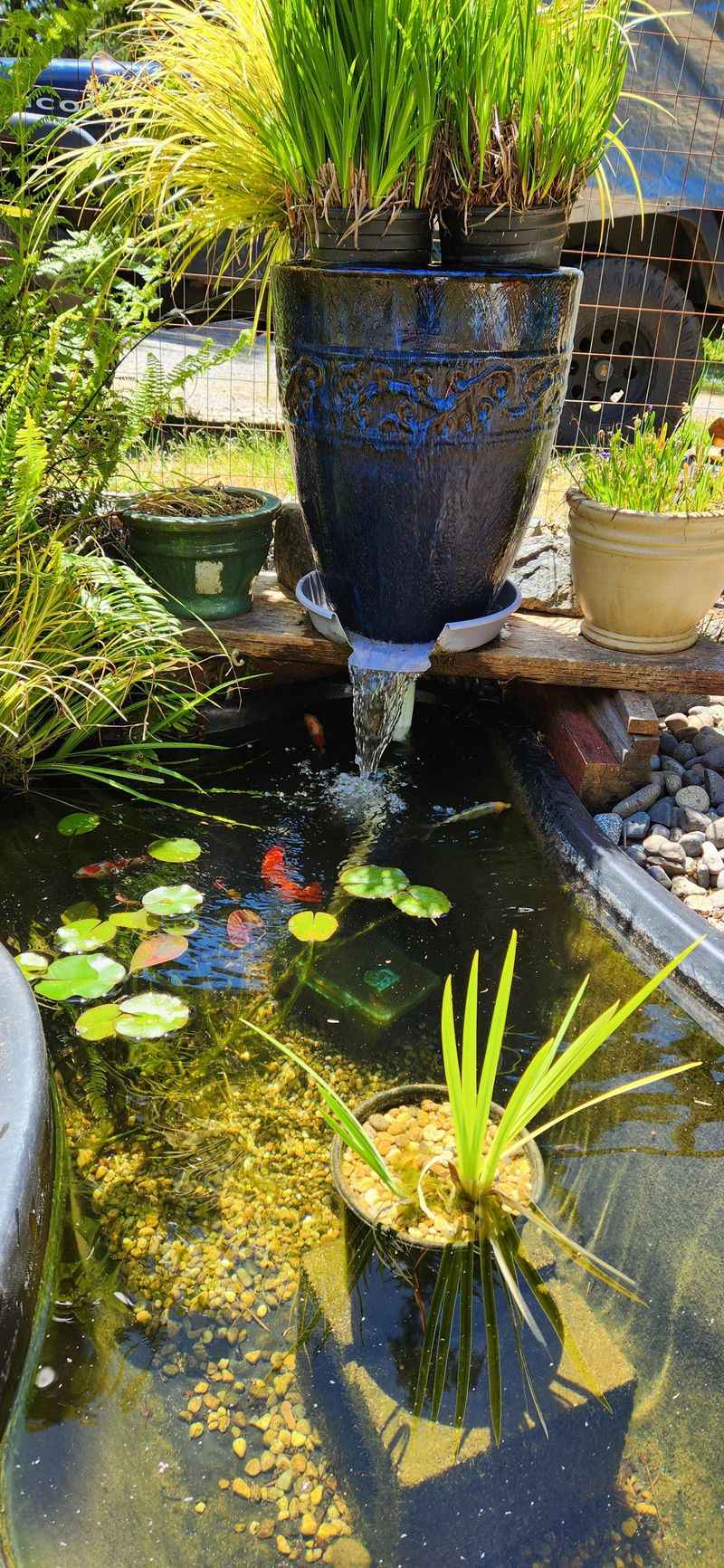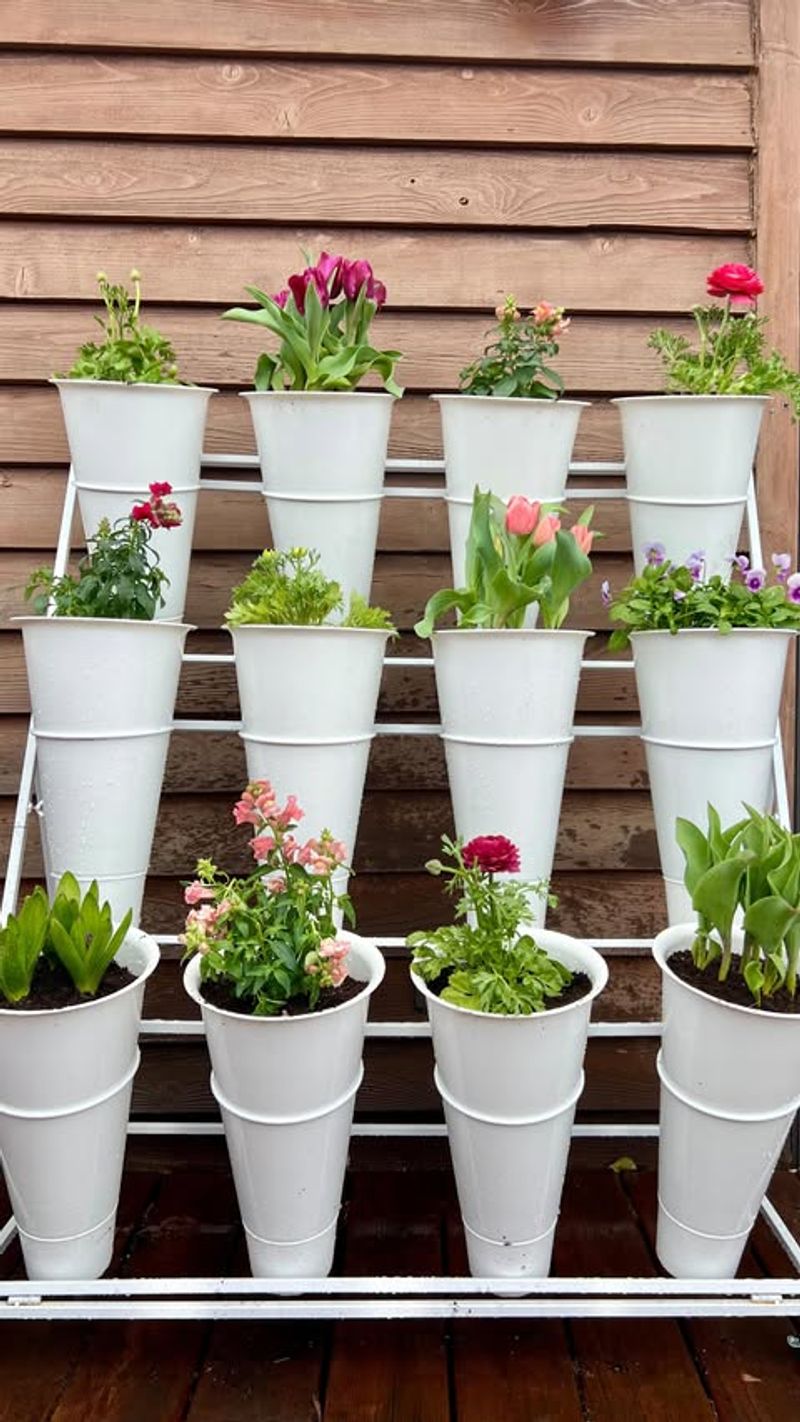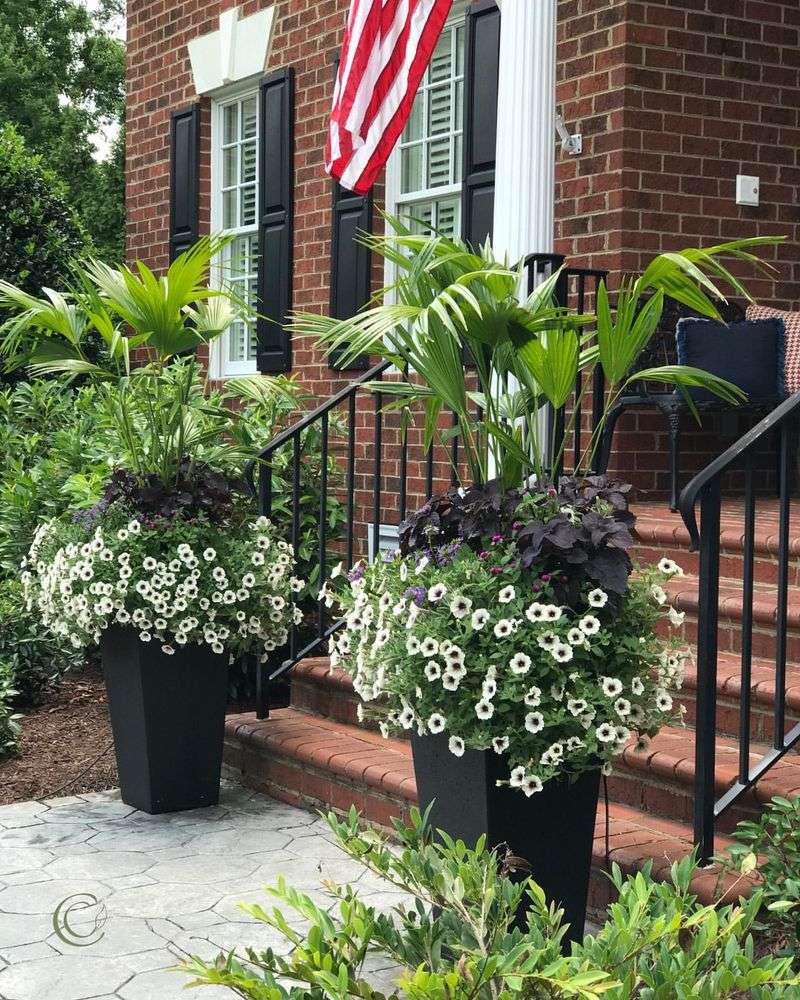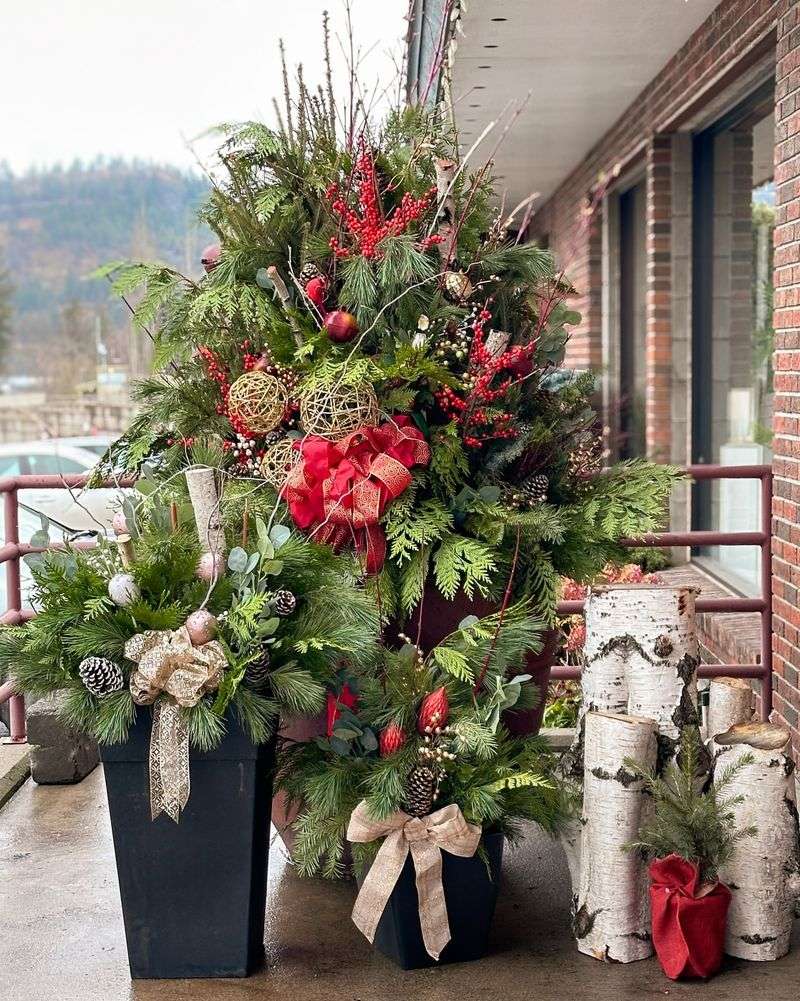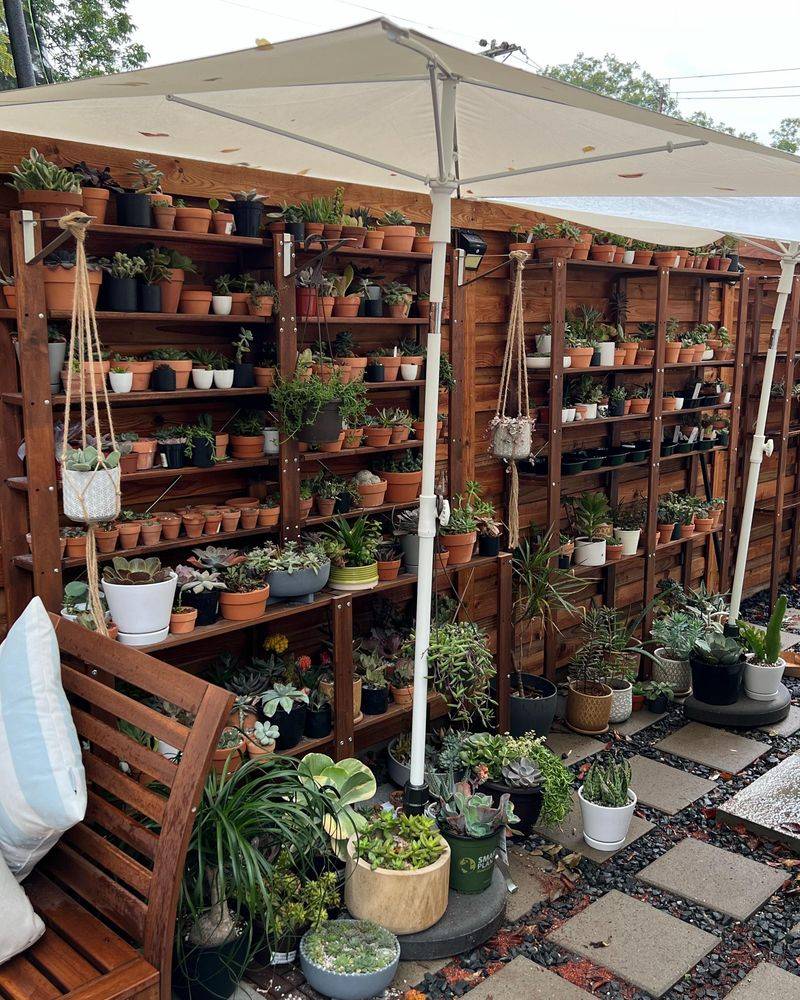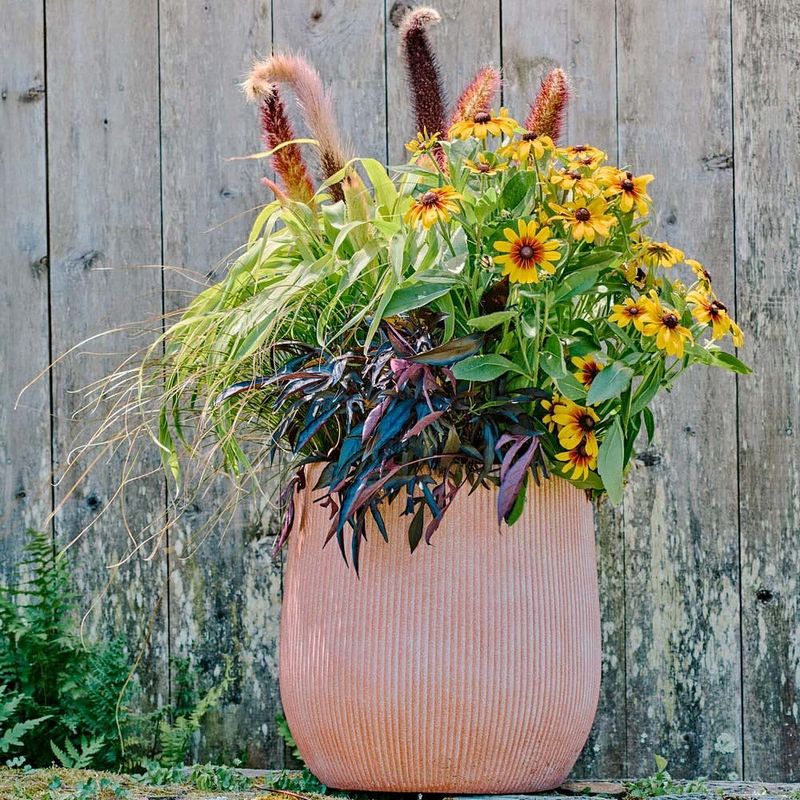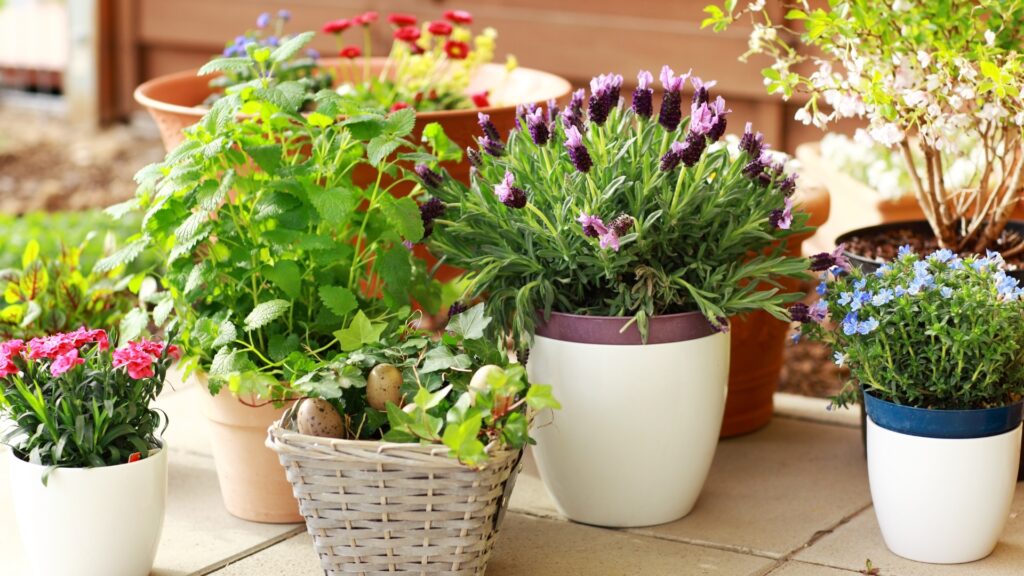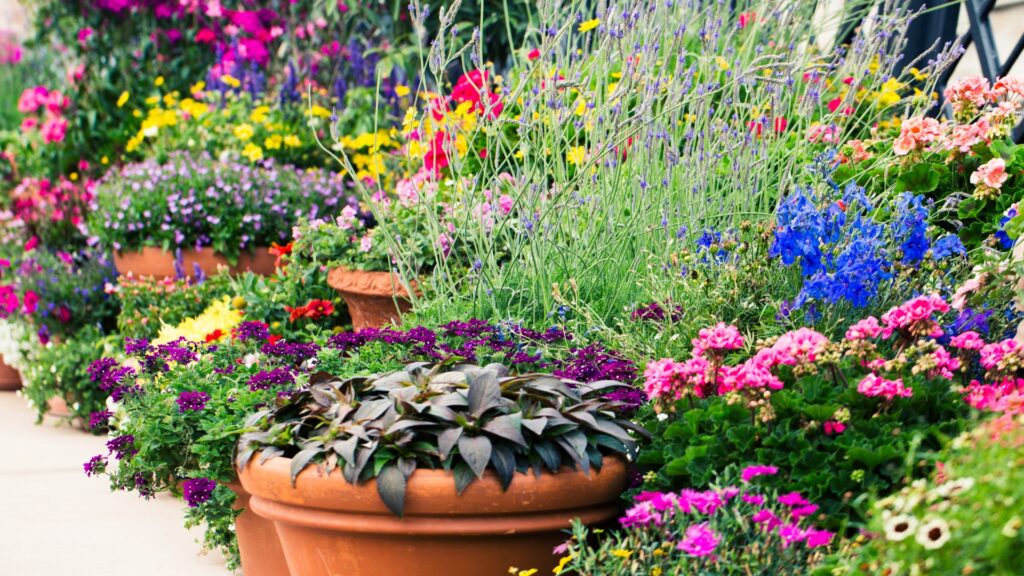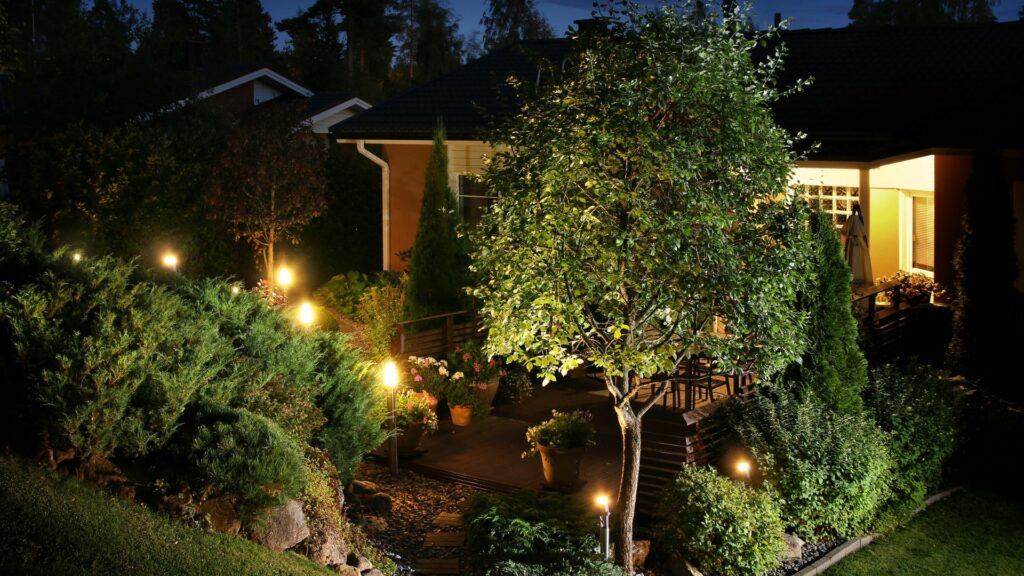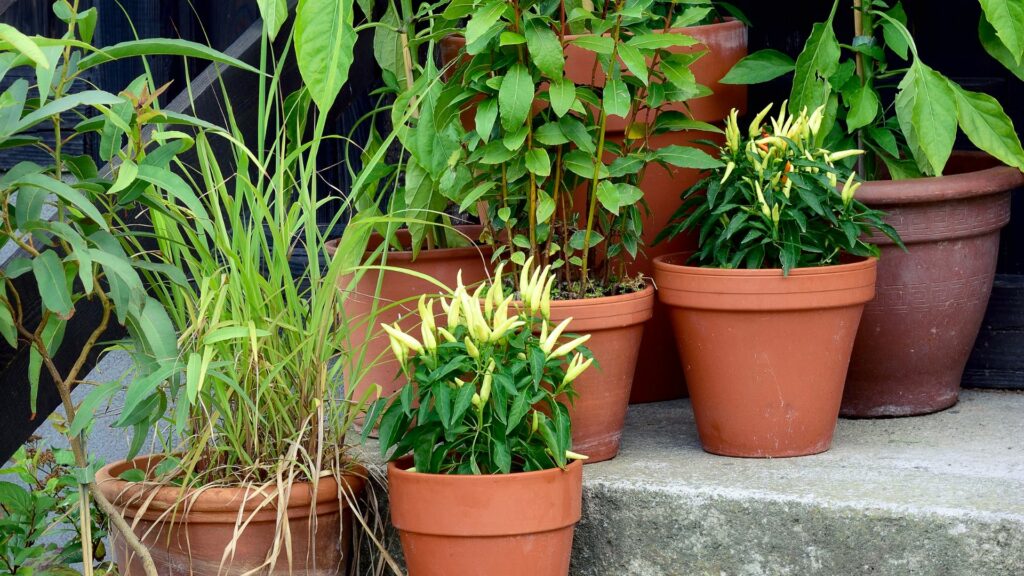Got a bunch of pots and no clue where to put them? You’re not alone—I’ve definitely stood in the garden holding a plant, turning in circles like I was lost in a plant maze.
Arranging pots isn’t just about filling space; it’s a chance to show off your style, play with color, and create little garden moments that make you smile. Whether you’re working with a patio, balcony, or backyard jungle, a few smart tips can totally transform your setup.
Let’s get those pots looking purposeful and picture-perfect!
1. Choosing The Right Pot Size
Bigger isn’t always better, especially when it comes to pot sizes! Consider the lively marigold or the dainty petunia; they each have their own space needs.
A pot too large could drown their roots, while too small might cramp their style. Think of it like finding the perfect pair of shoes for your green friends. Mixing and matching sizes not only caters to each plant’s needs but also adds a dynamic visual appeal to your garden.
2. Selecting Plant Types
Every plant has a personality, and your garden is the stage! From the sturdy succulent to the graceful fern, choose plants that complement each other.
Diversity in plant types can create layers of texture and color. Picture a symphony where each plant plays its unique tune. This harmonious arrangement can turn a bland area into a vibrant garden masterpiece.
3. Color Coordination
Color isn’t just for artists; it’s for gardeners too! Pair your bold red roses with subtle lavender, and let each hue tell its own story.
The contrast can bring out the best in both, like a garden fashion show. Consider your garden’s existing palette and choose pots that will either complement or contrast beautifully. Your garden can be the next masterpiece in the gallery of nature.
4. Elevating With Stands And Tables
When you run out of floor space, think vertical! Elevate your pots using stands and tables to create layers. This technique not only saves space but also gives your plants more sunlight.
Consider a vibrant geranium perched high on a stand, catching the first morning rays. The different heights add depth, transforming a flat garden into a multi-dimensional paradise.
5. Creating Focal Points
Every garden needs a star performer, and what better way than with a striking focal point? An eye-catching pot or a unique plant variety can draw attention and create interest.
Imagine a towering sunflower or a striking vase-like pot being the main act. Use surrounding pots to support this centerpiece, like a chorus of colorful companions. This technique ensures your garden sings in harmony with a delightful solo.
6. Incorporating Garden Art
Why should your plants have all the fun? Integrate garden art to add personality and charm. Think quirky sculptures or elegant pieces nestled among your pots.
These artistic touches can reflect your personal style and make your garden uniquely yours. The fusion of flora and art creates a visual feast that enchants every visitor.
7. Using Hanging Pots
Running out of floor space? Take to the skies with hanging pots! These are perfect for trailing plants like ivy or lantana, adding whimsy and charm to any garden.
Consider how they sway gently in the breeze, creating a living tapestry above. Hanging pots allow you to maximize space in a truly enchanting way.
8. Experimenting With Patterns
Why settle for ordinary when you can play with patterns? Arranging pots in circles, spirals, or grids can add an artistic flair. It’s like solving a puzzle where every piece is unique.
Consider a spiral of colorful blooms leading the eye through your garden. This playful arrangement keeps the design fresh and engaging.
9. Mindful Of Sunlight And Shade
Sunlight is a fickle friend, so knowing where it shines is key. Some plants, like sunflowers, crave the sun, while ferns might prefer shadier corners.
Be mindful of your garden’s light patterns throughout the day. Strategically place your pots to give each plant its happy spot. This thoughtful placement ensures a thriving, joyous garden.
10. Balancing Symmetry And Asymmetry
Balance isn’t just for tightrope walkers! In gardening, symmetry can bring order, while asymmetry adds surprise. Consider arranging pots in pairs for a classic look or scatter them for a more relaxed vibe.
Each approach has its own charm, and together they create a delightful balance. It’s like a dance where every step feels just right.
11. Seasonal Rotations
Change is the spice of garden life! Seasonal rotations keep your garden vibrant and fresh. Swap out plants as the seasons change, like tulips in spring and chrysanthemums in fall.
This ensures your garden is always in tune with nature’s rhythm. A little change can refresh your space and lift your spirits.
12. Incorporating Edibles
Why not turn your garden into a feast for the senses? Incorporate pots of herbs and vegetables alongside your flowers. Imagine plucking fresh basil or juicy tomatoes right from your garden.
These edible additions are not only practical but also add texture and color. A garden that’s as tasty as it is beautiful!
13. Choosing Complementary Shapes
Shapes matter, even in gardening! Mixing round, square, and oval pots can create intrigue and movement. Think of it as a dance where each pot takes its unique step.
The variety breaks monotony and encourages visual exploration. Your garden becomes a lively stage where each pot shapes the story.
14. Maintaining Clean Lines
Clean lines bring a sense of order to any space. Aligning pots along pathways or borders can guide the eye and create harmony. It’s the gardening equivalent of tidying up your room for guests.
The neatness can make a small space feel larger and more inviting. A polished garden is a welcoming garden.
15. Incorporating Water Features
Water features add a tranquil touch to any garden. Surround them with pots to enhance their beauty. Imagine the gentle sound of water paired with the vibrant colors of blooming flowers.
This combination creates a sensory paradise. Your garden becomes a serene escape, inviting and calming.
16. Maximizing Vertical Space
When ground space is limited, think upwards! Use wall-mounted shelves or vertical planters to display your pots. This approach not only saves space but also adds an element of surprise.
Consider how your plants cascade down, creating a living waterfall of greenery. Vertical gardening is innovative and inspiring.
17. Blending With The Environment
A garden should feel like a part of its environment. Choose pots and plants that complement the natural landscape. This harmony can make your garden feel limitless.
Imagine the seamless blend as if nature herself had arranged it. Your outdoor space becomes an extension of the world around it.
18. Adding Personal Touches
Personal touches make a garden truly yours. Decorate pots with family initials or favorite colors. It’s like leaving your signature in nature’s guest book.
These unique additions can make your garden a reflection of who you are. A personal garden is a joyful garden.
19. Considering Wind And Weather
Mother Nature can be unpredictable, so prepare for her moods. Use heavier pots in windy areas or provide windbreaks. Consider how a sturdy rosemary bush withstands the breeze.
Being mindful of the elements ensures your garden stays intact. Preparedness turns potential gardening woes into wins.
20. Experimenting With Textures
Textures add depth and intrigue to your garden. From smooth ceramic to rough terracotta, each pot tells a different story.
Mixing textures can create a tactile experience that invites touch. Imagine the dance of light and shadow on varied surfaces. A textural garden is a captivating garden.
21. Grouping By Watering Needs
Not all plants sip at the same pace! Grouping pots by watering requirements ensures each plant gets just what it needs—no more, no less. Imagine succulents basking together in dry soil, while thirsty impatiens keep each other company nearby.
This thoughtful arrangement simplifies maintenance and promotes healthy growth. It’s like organizing roommates by lifestyle—they’ll all thrive when matched well!
22. Creating Pathway Borders
Line your walkways with pots to frame your garden journey. From cheerful daisies to elegant grasses, using potted plants as borders adds structure and charm.
Each step becomes a moment of discovery as color and texture guide you forward. This method turns even a simple stroll into a scenic garden tour.
23. Reusing And Repurposing Containers
Gardening doesn’t always require store-bought pots—sometimes the best containers are the ones you already have! Repurpose old buckets, wooden crates, tin cans, or even broken teapots to hold your green treasures.
These unconventional pots bring charm and character to your space while being eco-friendly. Picture an antique kettle overflowing with trailing lobelia or a vintage drawer filled with cheerful pansies. Not only do you give new life to forgotten items, but you also infuse your garden with personality and creativity.
24. Lighting Up Your Pots
Don’t let your pots disappear after sunset—add lighting to make them shine at night. Solar-powered stake lights, fairy lights, or small uplights placed near or even inside large pots can highlight foliage and create evening ambiance.
Imagine your favorite fern glowing softly under a warm light or a path lined with subtly lit pots guiding the way. Lighting adds mood and functionality, extending your garden’s magic well into the evening hours.
25. Rotating For Growth And Interest
Sometimes, a simple turn is all it takes! Rotating your pots occasionally helps ensure even sun exposure and balanced growth, especially for light-loving plants like geraniums or coleus.
It’s also a smart way to refresh the look of your space without changing a single plant. A small shift in angle can reveal new textures, blooms, or arrangements you might’ve missed before—like rearranging art in your personal gallery.

